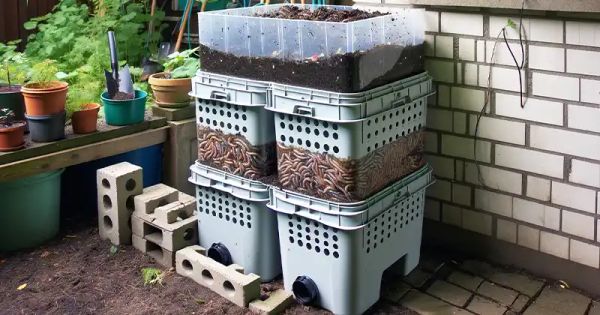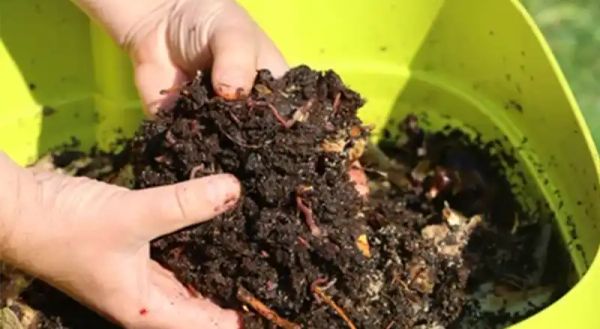Are you looking for a fun and eco-friendly way to recycle your kitchen waste and create nutrient-rich compost for your garden? Look no further than vermicomposting! In this guide, we’ll show you how to make your very own vermicomposter using a simple three-tote system. It’s easy, effective, and a great project for gardeners of all ages!

Materials Needed:
Before we get started, here are the materials you’ll need:
- Three durable plastic totes (we recommend Roughneck brand for their durability)
- One lid for the totes
- A cooler drain or a similar item for drainage
- A drill with a quarter-inch bit
- Bricks or blocks for elevation
Step-by-Step Guide:
Now, let’s dive into the step-by-step process of creating your homemade vermicomposter:
Preparation of Totes:
Start by drilling quarter-inch holes across the bottom of two totes. These holes are important for allowing worms to move between layers and for proper drainage. Additionally, drill holes around the upper edges of these totes to provide adequate aeration.

Setting Up the Drainage System:
The bottom tote will act as your drainage collector. Install the cooler drain on the recessed side of the tote to ensure effective drainage. The drilled holes will allow excess liquid, also known as “worm tea,” to drain out. Worm tea is a nutrient-rich liquid fertilizer that can be used in your garden.Assembling the Vermicomposter:
Stack the two drilled totes on top of the drainage tote. These will serve as the living quarters for your worms and the composting area. Initially, the worms and compost material will go into the top tote.

Transferring the Worms:
Carefully transfer your worms into the top tote, along with their current bedding and food scraps. As the top tote gets filled with worm castings (worm poop), shift it to the middle position, making the newly top tote the active composting layer.Maintenance and Harvesting:
Continue adding kitchen scraps and bedding to the new top layer. The worms will naturally migrate upwards towards the fresh food source, leaving behind rich compost in the lower tote. Once a tote is full of castings and devoid of worms, you can empty it into your garden. Don’t forget to regularly check the bottom tote for worm tea and use it as a liquid fertilizer in your garden!Elevating the System:
Raise the entire setup on bricks or blocks. This elevation helps with drainage and makes it easier for you to access the different layers of your vermicomposter.
Creating a homemade vermicomposter is not only a rewarding endeavor but also a fantastic way to contribute to a sustainable environment. This three-tote system is efficient, cost-effective, and perfect for gardeners like you. Once you get the hang of it, feel free to experiment and adapt the system to suit your needs. Happy composting, and enjoy the benefits of rich, organic compost for your garden!




